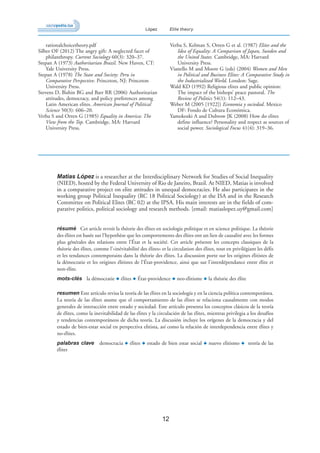Increased Philanthropy At Elite Universities: A Response To Political Pressure

Table of Contents
The Rise in University Donations
The past decade has witnessed a significant uptick in donations to elite universities. Understanding this trend requires analyzing both the sheer volume of donations and the context surrounding their increase.
Analyzing Recent Trends
Examining donation figures from prestigious institutions reveals a compelling narrative. Let's consider the following:
- Specific examples: Harvard University received a $400 million gift in 2022 for financial aid, while Stanford University saw a series of large donations totaling over $1 billion earmarked for research in artificial intelligence and sustainability. These are just two examples highlighting the scale of recent philanthropic contributions.
- Growth rate comparison: Comparing donation growth from 2013-2023 to previous decades shows a marked acceleration, particularly in the last five years. This surge surpasses historical trends, prompting further investigation into underlying causes.
- Shifting donation sources: We are witnessing a notable rise in corporate giving alongside continued robust individual philanthropy. This blended approach suggests a complex interplay of motivations driving this increase in charitable giving.
The Impact of Large Endowments
Existing substantial endowments at elite universities amplify the effects of new donations.
- Endowment influence: Universities with massive endowments, such as Yale and Princeton, utilize new donations to strategically expand their research capabilities, build new facilities, and enhance their overall prestige.
- Investment strategies: Endowment management and investment strategies play a crucial role. These strategies influence the overall growth and impact of the endowment, further compounding the effect of new philanthropic gifts.
- Ethical considerations: The sheer size of these endowments raises important ethical questions about their management, transparency, and equitable distribution of resources. Concerns about potential misuse or disproportionate benefits for certain departments or programs remain a significant point of debate.
Political Pressure and its Influence
The recent rise in donations to elite universities cannot be fully understood without considering the significant political pressure these institutions are facing.
Scrutiny of University Funding Models
Growing public debate surrounds the funding models of elite universities and their accessibility to students from diverse backgrounds.
- Public criticism: Rising tuition fees, coupled with concerns about student debt burdens, have fueled public criticism and calls for greater accountability in how universities utilize their resources.
- Political investigations: In some cases, political investigations into university finances have added to the pressure to demonstrate greater transparency and social responsibility.
- Diversity, Equity, and Inclusion (DEI): Pressure to increase diversity, equity, and inclusion initiatives within elite universities has intensified, creating a further impetus for increased philanthropic support in these areas.
Donations as a Means of Damage Control
Increased philanthropy can be interpreted as a strategic response to negative publicity and political scrutiny.
- Addressing social concerns: Universities are increasingly using donations to fund initiatives focused on social justice, environmental sustainability, and community engagement. These efforts aim to improve their public image and demonstrate a commitment to social responsibility.
- Public relations strategies: Elite institutions are actively employing sophisticated public relations strategies to highlight their philanthropic achievements and showcase their commitment to addressing societal concerns.
- Strategy effectiveness: The long-term effectiveness of these strategies in deflecting criticism and influencing public perception remains a subject of ongoing debate and requires further research.
The Future of Philanthropy in Higher Education
The sustainability of this increased philanthropy depends on several interconnected factors.
Sustaining the Trend
Several factors will influence whether the current trend continues.
- Economic climate: Economic downturns and changes in the philanthropic landscape could significantly impact the level of charitable giving to universities.
- Public perception: Ongoing public debate and scrutiny of university practices will shape future donation patterns.
- University accountability: Increased transparency and robust accountability measures within universities will build trust and encourage continued philanthropic support.
Implications for Access and Equity
A crucial question is whether increased philanthropy translates into greater access and equity in higher education.
- Allocation of funds: Careful analysis is required to assess how donations are allocated and their impact on student financial aid, diversity programs, and other initiatives promoting inclusivity.
- Transparency in allocation: Demand for greater transparency in the allocation of philanthropic funds is paramount to ensure equitable distribution and maximize their societal impact.
- Addressing systemic inequalities: Universities have a critical role to play in addressing systemic inequalities in higher education; increased philanthropy must support this vital objective.
Conclusion
The surge in philanthropy at elite universities presents a complex picture. While increased donations offer significant financial advantages, it's essential to critically evaluate whether this trend reflects genuine charitable intent or a strategic response to growing political pressure. Transparent allocation of these funds, prioritized towards enhancing accessibility, equity, and social responsibility within higher education, is paramount. Continued scrutiny of university funding models and their impact on society is vital to ensure that increased philanthropy translates into meaningful positive change for all. Further research into the motivations behind this increased philanthropy and its long-term consequences is needed to fully understand its impact on the future of elite universities. Let's work together to ensure that this increased philanthropy truly serves the public good and promotes equitable access to higher education.

Featured Posts
-
 Analysis Open Ais Potential Acquisition Of Google Chrome
Apr 24, 2025
Analysis Open Ais Potential Acquisition Of Google Chrome
Apr 24, 2025 -
 Credit Card Spending Slowdown A Challenging Outlook For Issuers
Apr 24, 2025
Credit Card Spending Slowdown A Challenging Outlook For Issuers
Apr 24, 2025 -
 Is Open Ai Buying Google Chrome Chat Gpt Ceo Weighs In
Apr 24, 2025
Is Open Ai Buying Google Chrome Chat Gpt Ceo Weighs In
Apr 24, 2025 -
 John Travoltas Candid Bedroom Photo The Actor Speaks Out
Apr 24, 2025
John Travoltas Candid Bedroom Photo The Actor Speaks Out
Apr 24, 2025 -
 Ftc Investigation Into Open Ais Chat Gpt What It Means
Apr 24, 2025
Ftc Investigation Into Open Ais Chat Gpt What It Means
Apr 24, 2025
